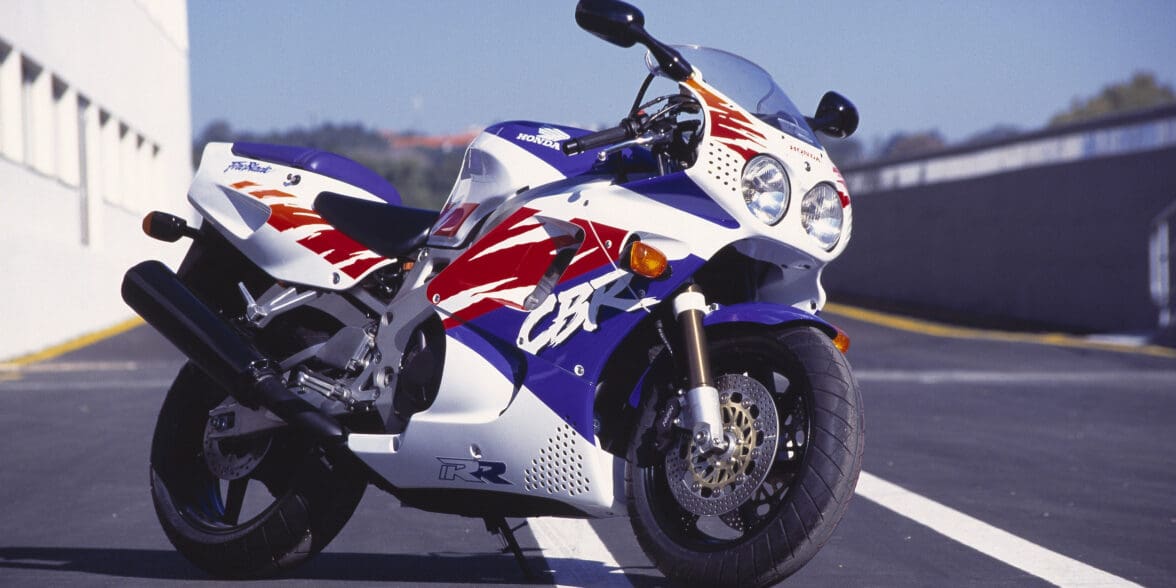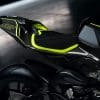Next up on our voyage through the decades, we arrive at the 1990s. While the 80s was a decade of innovation and excitement, the party really got started in the 90s. If you were a young and impressionable youth with a taste for high-speed thrills, jaw-dropping lean angles, and a penchant for general mischief, then the 90s was the decade for you. The efforts by designers, engineers, and manufacturers throughout the 80s had paid off: the superbike had truly arrived, and it was fast becoming the most sought-after and popular type of motorcycle on the road.
As you can very well imagine, this is going to be a sportbike-heavy rollercoaster ride, but there are some other exciting models that also made the cut. But let’s just once again underline that this is a list that focuses on sports machines because that’s what the 90s was all about. In fact, a list of 10 is far too limiting to include the best sportbikes of the decade, let alone the cruisers, tourers, dual-sport, and adventure machines that entered the market in the 90s.
And it’s for that reason that we’ll start with the disclaimer that you will be upset that your favorite models didn’t make the cut. You will be outraged that there was something included that you disagree with. And of course, you will disagree with pretty much every model on this list. And you know what? The 90s was such an impressive decade for the motorcycle industry, that you should be upset, and outraged, and disagree. There are too many good options to choose from that you really can’t please everyone.
So, without further ado, let’s see what kind of controversy we can cause…
Ducati Monster
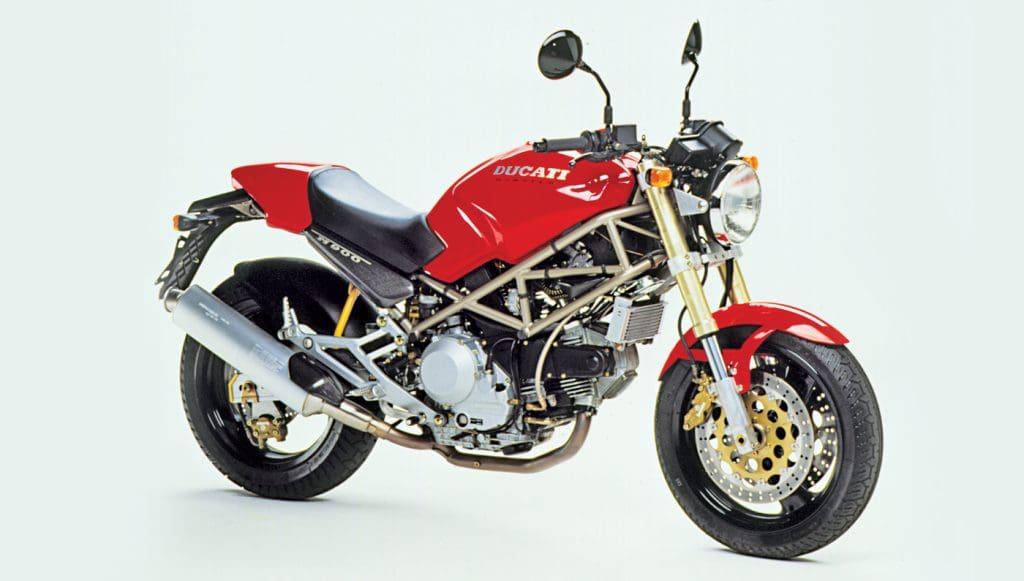
There are many motorcycles from the 1990s that have left a lasting impression on the industry, but the Ducati Monster is one of the most instantly recognizable. It first rolled onto the scene in 1992 and would change Ducati’s fortunes for the better. After being unveiled at the Cologne Motorcycle Show in 1992, the first M900 Monster hit the market in ’93 and became a serious hit.
Designed with minimalism in mind by veteran designer Miguel Galluzzi, the M900 Monster was a versatile and powerful machine that could please almost any type of motorcyclist. It was powered by a desmodromic 904cc air-cooled L-twin engine, with a race-inspired chassis, USD forks, Brembo brakes, and impressive power figures of 78 horsepower and 53 lb-ft of peak torque (depending on who’s telling the story). The only unimpressive feature was the price tag. It was not cheap. However, Ducati remedied this by releasing a smaller 600cc model a year later, with lower specs, and a lower price tag.
And the rest is history. The Monster is still with us today and is one of the most recognizable motorcycles on the market.
Triumph Speed Triple
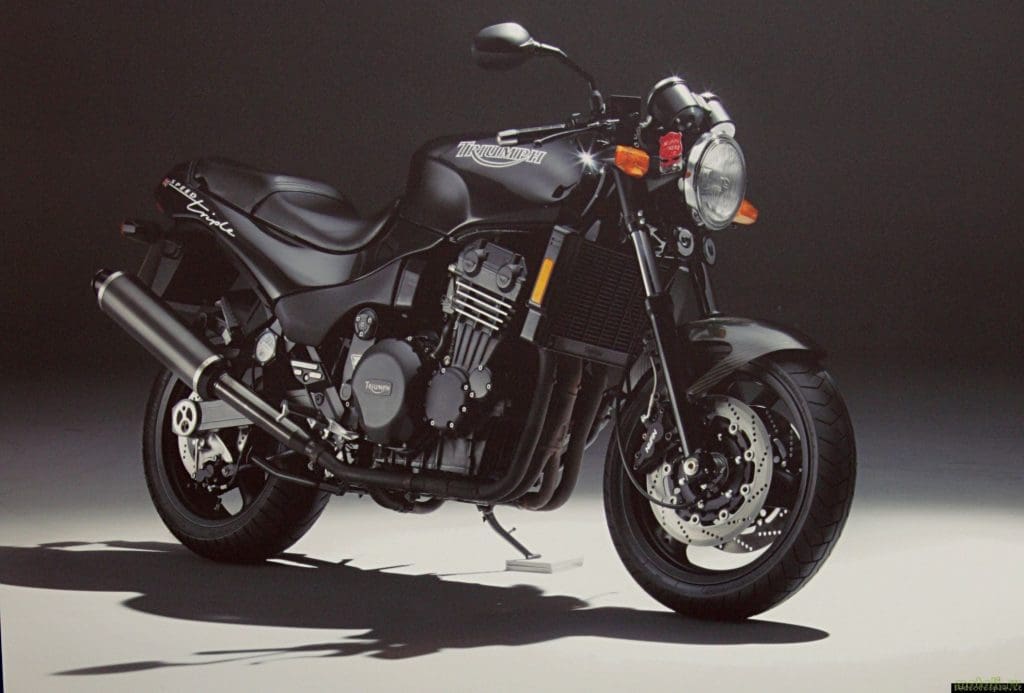
Next, we have another sports-focused roadster that emerged in the 90s and is still with us today: the legendary bug-eyed Triumph Speed Triple. Today, the Speed Triple is instantly recognized by its large twin headlamps, but it wasn’t always that way. The original Speed Triple first featured a round headlight when it first rolled onto the scene in 1994. Inspired by the 1938 Speed Twin, this new configuration featured Triumph’s signature triple-cylinder engine which also powered the brand’s other iconic bikes of the decade: the Trident, Daytona, and Thunderbird.
The ending was available in two flavors: 750cc and 885cc, depending on where you were based. In North America, riders were offered the larger 885cc model, with 98 horsepower and 58 lb-ft of peak torque.
Throughout the 90s, the Triumph Speed Triple saw a few evolutions, and in the 2000s the bike evolved even further. Today, the Speed Triple is a core feature of Triumph’s line-up, and it’s one of the most celebrated models from the British marque.
Honda GL1500C Valkyrie
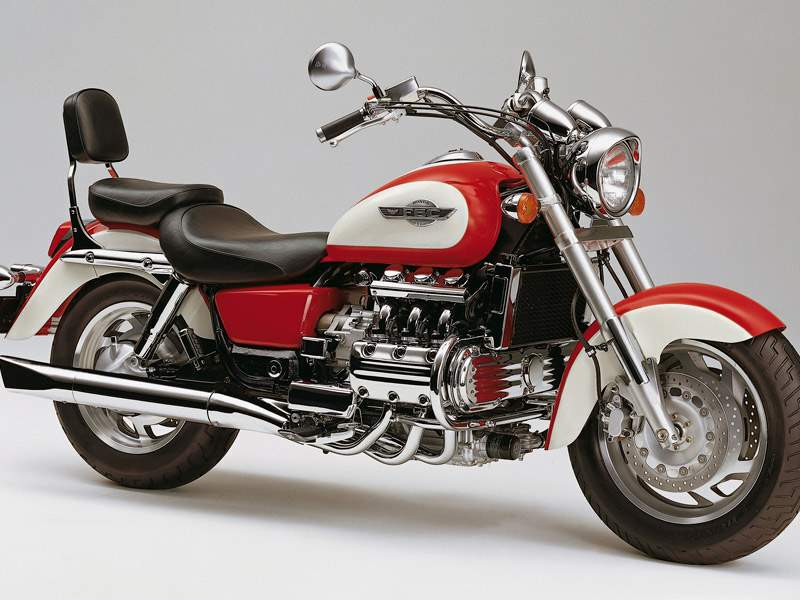
The next entry on this list is a bit of a curveball, but for the interests of keeping some variety on the list, we’ve added a cruiser element. Now, there are plenty of great cruisers from the 90s to choose from, but if we had to choose one it would be the Honda Valkyrie. While metric cruisers may not have the spirit and soul of their American cousins, the Valkyrie certainly has plenty of character.
Nothing turns heads like a big engine, and the old Valkyrie was built around a massive one. We’re talking about the bike’s giant 1520cc six-cylinder powerplant that produced a hearty 100 horsepower, 87 lb-ft of torque, and drove the Valkyrie to a top speed north of 115 mph. In short: the Valkyrie was a stripped-down GL1500 Gold Wing, with big power and no-frills.
But it wasn’t uncomfortable because of the lower gearing and lack of add-ons. Instead, it was easy to maneuver, could corner well, and went pretty fast too. Plus, being a Honda, it was very reliable. Whether or not it was the best cruiser of the 90s is up for debate, but if we had to choose one, the Valkyrie would be our first choice.
Aprilia RS125
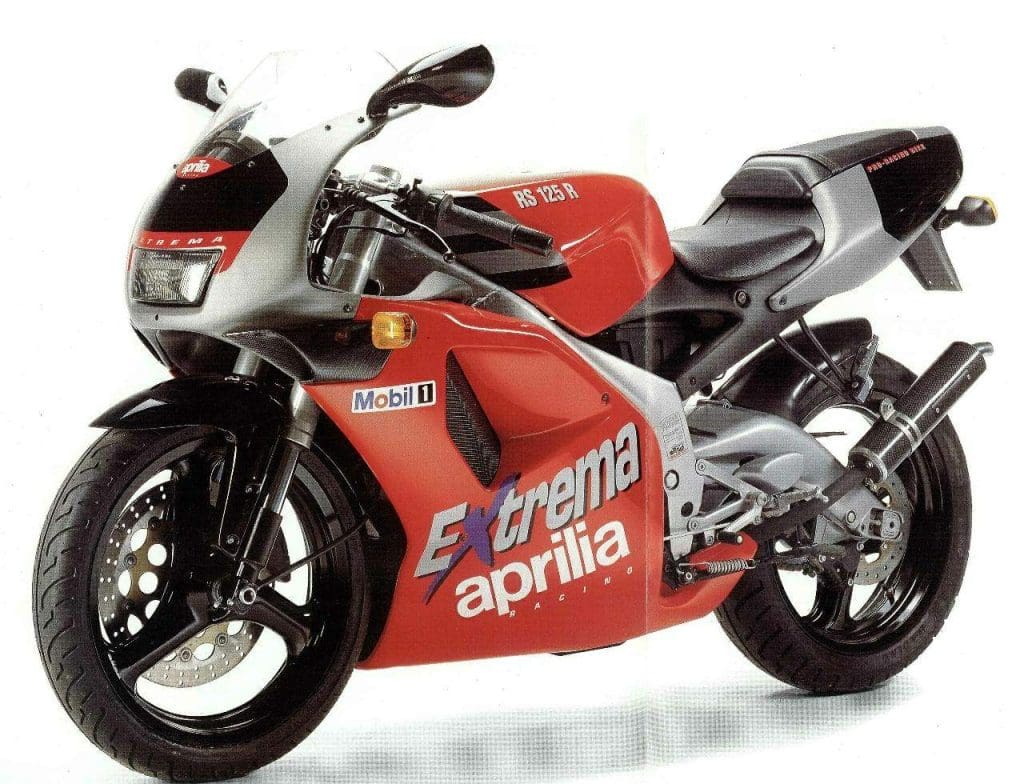
Now, let’s turn our attention to sports bikes and start with one of the most iconic: the Aprilia RS125. When it comes to small capacity two-strokes, there are a number of excellent options. The Cagiva Mito, for example, is a stunning motorcycle. The Aprilia AF1 is another. However, it’s the AF1’s successor, the RS125 that most of us hold in the highest esteem.
Small two-strokes might not be big business in North America, but in Europe, they’re incredibly important—particularly if you have ambitions to become a professional racer. Many a young GP rider cut his teeth on board one of these machines. Why? Because they’re incredibly powerful, potent, and responsive racing bikes.
The RS125 rolled onto the scene in 1992 and came equipped with a punchy 124cc single-cylinder two-stroke Rotax engine, boasting 28 horsepower and 18 lb-ft of torque. The engine was held in place in a lightweight frame with advanced race fairings, and back then, that’s all young racers needed.
Today, the RS125 lives on. However, Aprilia has ditched the two-stroke approach and the modern RS4 125 now features four-stroke fuel-injection technology. In short, it’s a shadow of its former self.
Ducati 916
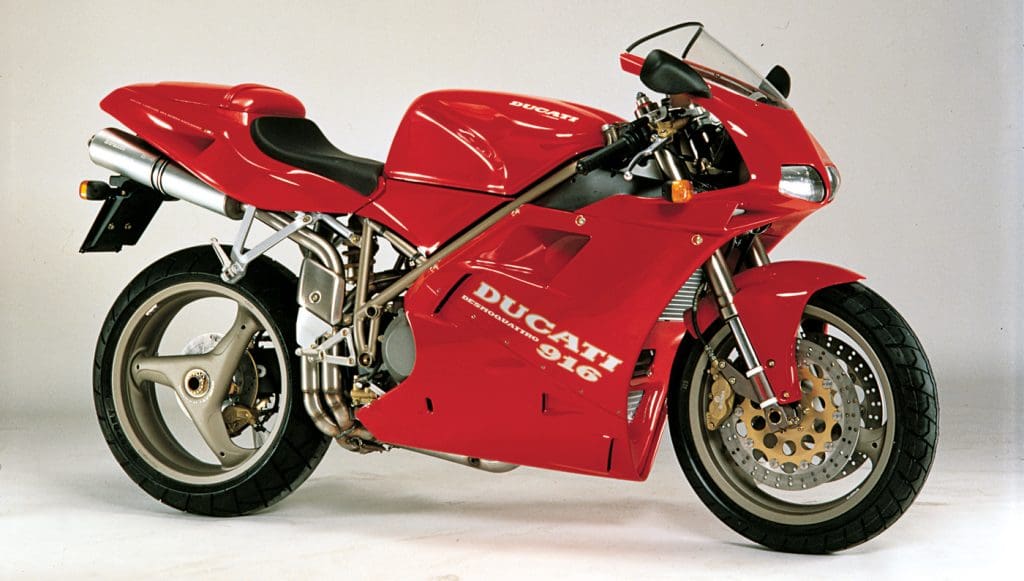
Lists ranking the best motorcycles of the 1990s are a dime a dozen. Some are good, some are bad. However, if there’s a list out there that doesn’t include the Ducati 916, then close it down immediately, because there is no good reason to omit the 916 from the list. It’s the ultimate 90s sportbike, surely?
“Yes” is the only sensible answer to that question. It’s an undeniably beautiful motorcycle, penned by master motorcycle designer Massimo Tamburini, and one of the most recognizable and iconic Ducati’s ever made. Not only was it beautiful, but it also performed staggeringly well too, even if its specs didn’t match the competitions on paper.
Powered by Ducati’s 916cc liquid-cooled L-twin, with 114 horsepower and 67 lb-ft of torque, the 916 was behind its closest rivals, but only on paper. With a broad torque spread and outstanding agility, the 916 was able to win a World Superbike Championship title and the hearts and minds of sportbike enthusiasts all over the world. And that’s why it’s on our list.
Suzuki GSX-R750
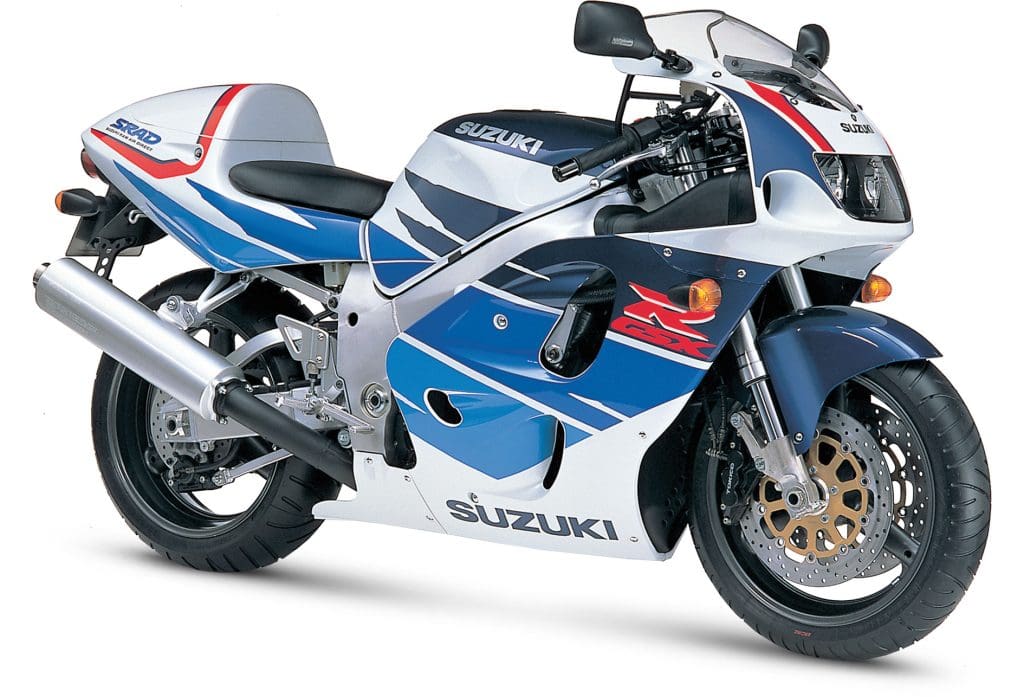
Readers of this series will know that we’ve already done the GSX-R750 in our 80s list. So why include it again for the 90s? Well, the answer to that question is that the second generation of Suzuki GSX-R750 was a whole new beast. The 90s saw the GSX-R750 evolve into a more powerful and more exciting sports machine, and the new 750 helped define what a modern sportbike could be.
To start with, the old cradle frame was scrapped in favor of a new RGC-inspired twin-spar arrangement that helped shave 40 lbs off of the GSX-R’s overall weight. The new race frame was complemented with race-derived aerodynamic bodywork, Suzuki’s iconic SRAD (Suzuki Ram-Air Direct) technology, and a price tag that undercut the rivals by a fair margin.
With 130 horsepower on tap, 59 lb-ft of torque, a top speed of 164 mph, and one of the most gorgeous aesthetics of the era, the GSX-R750 was an affordable and powerful machine that helped bring top-spec thrills to those with tighter budgets.
Honda CBR900RR
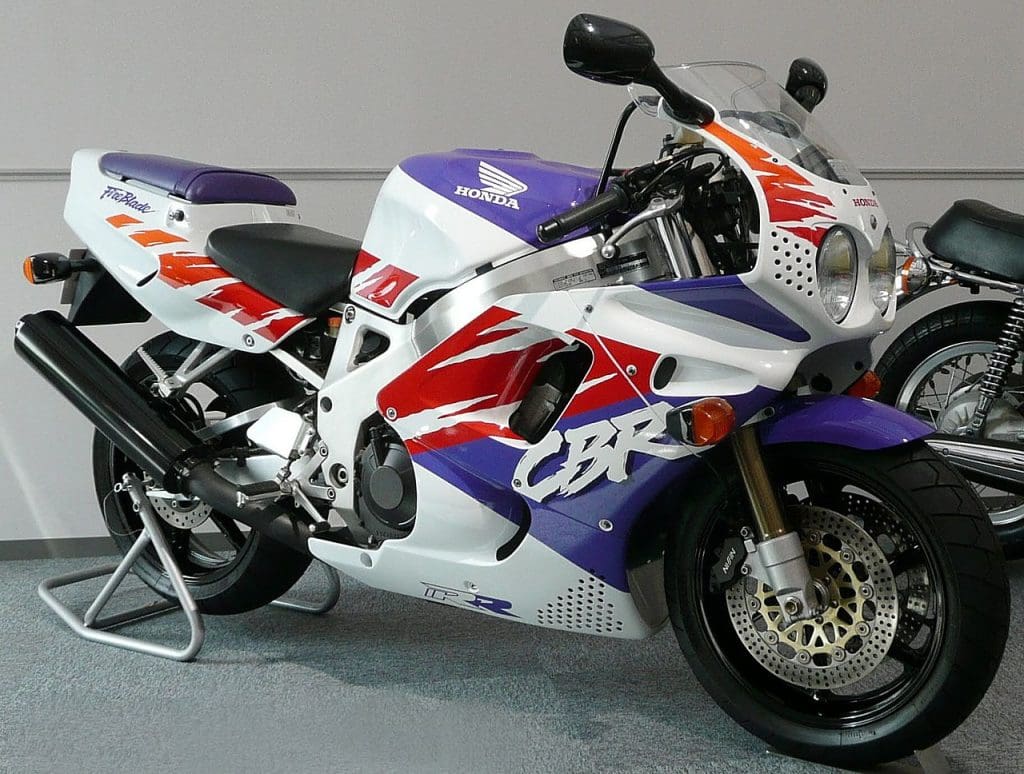
And of course, no list of 90s bikes could be complete with the legendary CBR900RR. The 900RR, also known as the Fireblade, first appeared in 1992. It was designed by Honda legend Tadao Baba, and it the idea behind the ‘Blade was to build a machine that could deliver big power but without the overbearing weight that often accompanied it. In short, the 1992 Honda CBR900RR packed a powerful punch in the power department, but in a chassis that was lightweight and nimble, resembling a 600cc in handing rather than a big 1000cc.
The original CBR900RR was built around an 893cc inline-four engine with some impressive power figures. It boasted a max power output of 122 horses (117 at the wheel), 64 lb-ft of peak torque, and a top speed of 164 mph—all wrapped up in a package that you could flick around corners and ride with pinpoint accuracy.
For many riders, the CBR900RR was the perfect sportbike of the era. But the Fireblade arrived at the beginning of the 1990s. At the other end of the decade, another machine arrived that would dethrone the CBR.
Yamaha YZF-R1
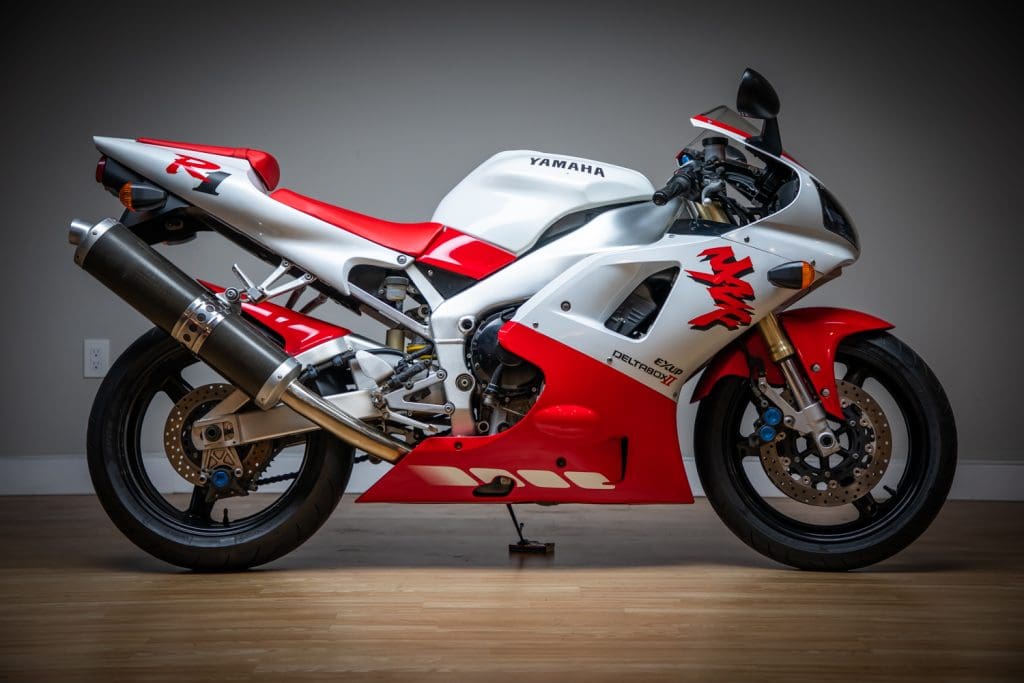


Following on directly from the CBR900RR, the next entry has to be the Yamaha YZF-R1. While the CBR was king for most of the 90s, 1998 brought the world the Yamaha R1: a powerful sportbike with superb agility, impressive specs, a compact silhouette, and a fearsome reputation. Like the CBR, the R1 wasn’t big in stature, but while the CBR sacrificed power to remain in a trim and lightweight package, the R1 didn’t need to. It was powerful, compact, and devastatingly fast.
Under the proverbial hood, the R1 featured a 998cc inline-four engine that produced a giant 150 horsepower at the crank (129 hp at the wheel), 72 lb-ft of peak torque, a top speed of 168 mph, and a 0-60 mph time of 2.96 seconds—which is more than enough for anyone. The engine wasn’t the only selling point. The R1 also boasted fresh innovations in the form of transmission refinements, an impressive alloy frame, and stunning bodywork.
Like all of the best bikes on this list, the Yamaha R1 is still with us today as the star of the Yamaha line-up, and it’s still one of the most instantly recognizable sportbikes on the roads today. Does it count as a true 90s icon since it only arrived at the tail end of the decade? Opinions are split, but since it arrived in the 90s, we think it counts.
Kawasaki Ninja ZX-11
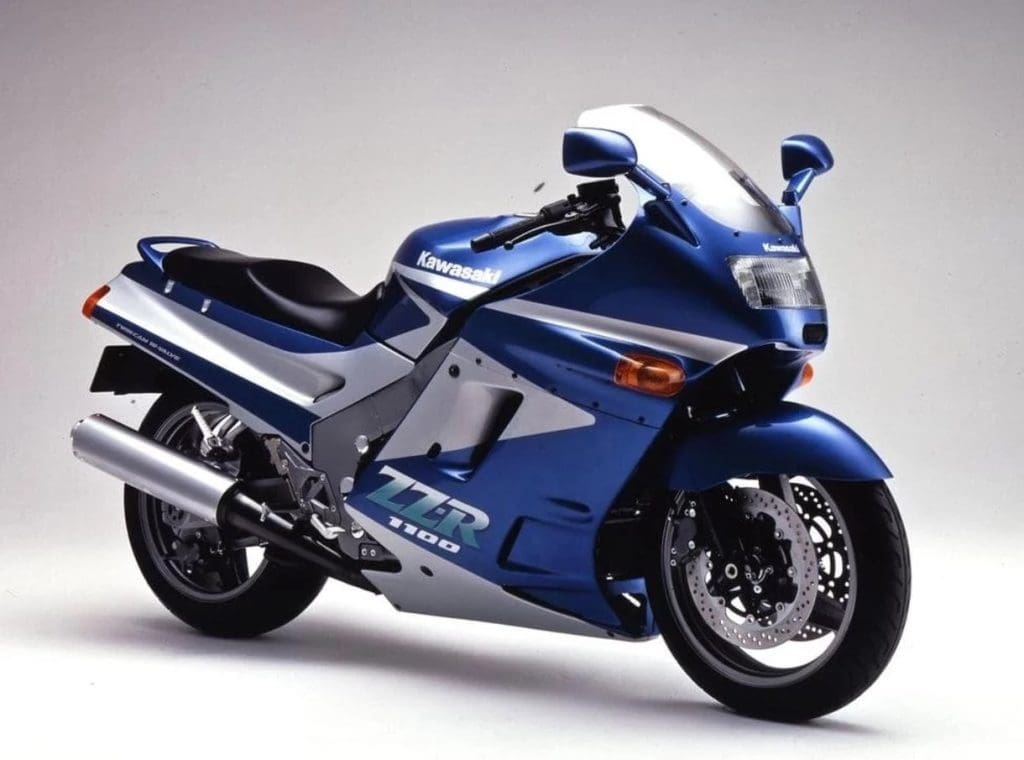


Sportbikes don’t stop at 1,000cc, as you’ll see for our final two entries. No list of the best motorcycles of the 1990s would be complete without a heavyweight sports machine or two included. While there are no shortages of Ninjas that could easily join this list, if we had to pick one that helped define the decade, it would be the Kawasaki Ninja ZX-11.
Honda fans may chime in saying that the Blackbird should be included instead of the ZX-11, but the ZX-11 got there first. You see, the successor to the Tomcat arrived in 1990 and for the first six years of its life, it was the fastest production motorcycle around, with a record top speed of 176 mph. It was certainly beaten by the Blackbird later on, but the ZX-11 held onto the title for 6 years in the 1990s, while the Blackbird held the title for less (granted, by no fault of its own).
The Kawasaki ZX-11 featured a 1,052cc inline-four engine that could produce a massive 145 horses at the crank and 134 hp at the wheel, with 80 lb-ft of peak torque too. With a top speed of 176 mph, it was dangerously fast, and the rivalry sparked between Kawasaki and Honda only encouraged the genesis of another contender, one that would change the landscape of motorcycling for good.
Suzuki Hayabusa
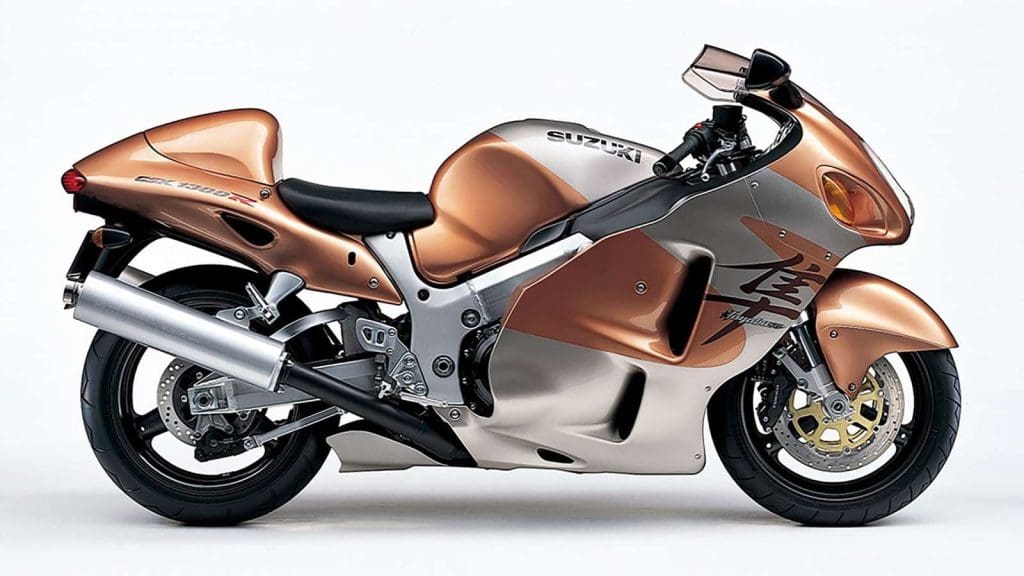


You can either love it or hate it. It doesn’t really matter, because there’s no denying that the Suzuki Hayabusa was one of the most significant motorcycles produced in the 1990s, and one of the most important and transformative motorcycles ever made. When it first arrived on the scene in 1999, it moved the goalposts and redefined what a motorcycle could be capable of. It also helped usher in an era of restriction, since it was simply too powerful.
Equipped with a giant 1,299cc inline-four engine, the first generation ‘Busa produced 173 horsepower at the crank, 99.6 lb-ft of peak torque, and delivered a top speed of 194 mph. But it wasn’t just fast. Despite being big and bulky, the Hayabusa was agile, and comfortable, with a good fuel economy, and impressive reliability. As a heavyweight sportbike, it could go fast but it was just a good motorcycle too.
But its impressive power was a problem. Feeling threatened by the rise of Suzuki’s Hayabusa, rumors spread that Kawasaki was releasing an even more powerful ZX-12 model, with talk about an escalating speed war between manufacturers. Faced with the threat of import bans and heavy restrictions, the industry’s top manufacturers got together and agreed to an informal gentleman’s agreement, limiting top speeds to 186 mph, in the interests of safety and good business.
So while the Suzuki Hayabusa was an icon due to its performance, it also helped forge a new direction for motorcycles that would extend right into the 2000s and 2010s. We’ll learn more about that in our next article: the best motorcycles of the 2000s.


